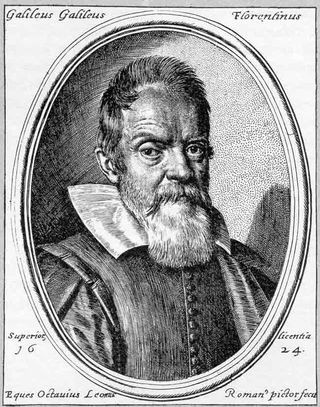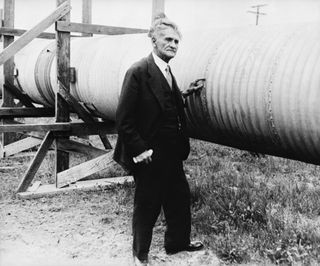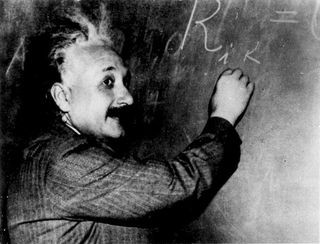Light, a fundamental aspect of our universe, plays a crucial role in our perception and understanding of the cosmos. Curious Where Does Light Travel Fastest? Light achieves its maximum velocity in a vacuum, unhindered by any medium. Let SIXT.VN be your guide as we explore the fascinating realm of light speed, its implications, and how it influences our comprehension of space and time, offering you a smoother and more insightful travel experience in Vietnam. We aim to help you understand the speed of light, measure time, and even plan your next vacation.
1. Understanding the Universal Speed Limit: What is the Speed of Light?
The speed of light in a vacuum is precisely 299,792,458 meters per second (approximately 186,282 miles per second). This constant, denoted as “c,” acts as a universal speed limit, according to Einstein’s theory of special relativity. Nothing in the universe can surpass this speed, making it a cornerstone of modern physics.
According to research from the National Institute of Standards and Technology (NIST) in 2018, the immutable speed of light is a cornerstone in defining international standard measurements, including the meter.
 Abstract, futuristic image of blue light streaks radiating outward, giving the impression of rapid movement or traveling at high speed, inspired by the concept of faster-than-light travel
Abstract, futuristic image of blue light streaks radiating outward, giving the impression of rapid movement or traveling at high speed, inspired by the concept of faster-than-light travel
2. What is a Light-Year and How Does it Relate to the Speed of Light?
A light-year is the distance light travels in one year, approximately 6 trillion miles (10 trillion kilometers). It’s a unit of measurement used by astronomers and physicists to measure the enormous distances in our universe.
- Moon to Earth: Light takes about 1 second.
- Sun to Earth: Light takes about 8 minutes.
- Alpha Centauri to Earth: Light takes about 4.3 years.
Imagine laying the Earth’s circumference (24,900 miles) in a straight line, multiplying that length by 7.5, and then placing 31.6 million similar lines end to end. The result is nearly 6 trillion miles, illustrating the vastness of a light-year, according to NASA’s Glenn Research Center. Planning a trip to Vietnam may not involve light-years, but SIXT.VN can certainly help you navigate distances within the country with ease!
How Long Would It Take Humans to Travel One Light-Year?
Traveling at 600 mph (965 km/h), it would take an airplane 1 million years to travel a single light-year. A crewed spacecraft like the Apollo lunar module would take approximately 27,000 years, according to BBC Sky at Night Magazine. When booking your flight to Vietnam through SIXT.VN, you’ll be pleased to know it won’t take quite that long!
3. Insights from an Expert: Speed of Light FAQs Answered
We consulted Dr. Rob Zellem, a staff scientist at NASA’s Jet Propulsion Laboratory, to answer some frequently asked questions about the speed of light.
3.1. Is Anything Faster Than the Speed of Light?
No, light is a universal speed limit at 300,000 kilometers per second (186,000 miles per second).
3.2. Is the Speed of Light Constant?
In a vacuum, yes. However, light slows down when passing through mediums like water (225,000 km/s) or glass (200,000 km/s).
3.3. Who Discovered the Speed of Light?
Ole Rømer made one of the first measurements in 1676 by observing Jupiter’s moons. The speed of light was first measured to high precision in 1879 by the Michelson-Morley Experiment.
3.4. How Do We Know the Speed of Light?
Rømer measured the speed of light by observing eclipses of Jupiter’s moon Io. He noted that eclipses occurred slightly earlier when Jupiter was closer to Earth, attributing this to the time it takes light to travel the longer distance. When planning your travel to Vietnam, SIXT.VN ensures that all your transfers are timely and efficient!
4. Historical Attempts to Measure the Speed of Light
As early as the 5th century BC, Greek philosophers pondered the speed of light. Empedocles believed light had a travel rate, while Aristotle thought it was instantaneous.
 Galileo Galilei is credited with discovering the first four moons of Jupiter.
Galileo Galilei is credited with discovering the first four moons of Jupiter.
4.1. Galileo’s Experiment
In the mid-1600s, Galileo attempted to measure light speed using lanterns on hills. However, the distance was too short to accurately record the speed, only concluding that light travels at least 10 times faster than sound.
4.2. Rømer’s Astronomical Clock
In the 1670s, Ole Rømer, while creating a timetable for sailors, estimated the speed of light by observing the eclipses of Jupiter’s moon Io. He noticed the eclipses lagged most when Earth and Jupiter were moving away from each other.
Rømer estimated the speed of light at about 124,000 miles per second (200,000 km/s). According to a 1998 paper in the American Journal of Physics, his calculation was slightly off due to inaccuracies in the known size of the solar system.
4.3. James Bradley’s Calculations
In 1728, English physicist James Bradley based new calculations on the change in the apparent position of stars caused by Earth’s orbit around the sun, estimating the speed of light at 185,000 miles per second (301,000 km/s), accurate to within about 1%, according to the American Physical Society.
4.4. Fizeau and Foucault’s Experiments
In the mid-1800s, French physicist Hippolyte Fizeau used a rotating toothed wheel and a mirror to calculate light speed. Simultaneously, Leon Foucault used a rotating mirror for a similar experiment. Both methods came within about 1,000 miles per second (1,609 km/s) of the actual speed of light.
4.5. Michelson’s Pursuit of Precision
 Dr. Albert A. Michelson stands next to a large tube supported by wooden beams.
Dr. Albert A. Michelson stands next to a large tube supported by wooden beams.
Albert A. Michelson, born in Poland and raised in California, dedicated significant efforts to measuring the speed of light. According to the University of Virginia, he replicated Foucault’s method in 1879, increasing the distance between mirrors and using high-quality optics.
Michelson’s result of 186,355 miles per second (299,910 km/s) was the most accurate for 40 years. He later conducted further experiments, including using a mile-long depressurized tube, to refine his measurements.
According to Forbes, Michelson also studied the nature of light, questioning whether it was a wave or a particle.
Michelson, along with Edward Morley, sought evidence for the “luminiferous aether,” the medium thought to carry light waves. However, their experiment found no evidence of it, proving that light can travel through a vacuum.
5. Special Relativity and the Speed of Light
 Albert Einstein writing on a blackboard.
Albert Einstein writing on a blackboard.
Einstein’s theory of special relativity unifies energy, matter, and the speed of light in the equation E = mc^2. This equation explains the immense energy within mass and requires the speed of light to be a constant.
Einstein asserted that light moves through a vacuum at a constant speed, regardless of the observer’s motion. Objects with mass cannot reach the speed of light because their mass would become infinite, requiring infinite energy to move them.
6. What Can Go Faster Than the Speed of Light?
Although the speed of light is the universe’s speed limit, the universe itself expands even faster. According to astrophysicist Paul Sutter, the universe expands at a rate of a little more than 42 miles (68 kilometers) per second for each megaparsec of distance from the observer.
Special relativity provides an absolute speed limit within the universe. However, Einstein’s theory of general relativity allows different behavior when examining physics on a larger scale.
7. Does Light Ever Slow Down?
 A sparkling diamond amongst dark coal-like rock.
A sparkling diamond amongst dark coal-like rock.
Light slows down when traveling through materials, with the amount of slowing defined by the material’s refractive index. For example, light in Earth’s atmosphere slows down slightly, while light passing through a diamond slows to less than half its typical speed, according to PBS NOVA.
Light can be trapped and even stopped inside ultra-cold clouds of atoms, as demonstrated in a 2001 study published in Nature. Additionally, researchers have proposed ways to stop light at “exceptional points,” where light emissions intersect, according to a 2018 study in Physical Review Letters.
Scottish scientists also slowed down a single photon in a vacuum, as described in a 2015 study in the journal Science, demonstrating that light can be slower than the official speed of light.
8. Faster-Than-Light Travel: Science Fiction or Future Possibility?
Science fiction often explores faster-than-light travel, making interstellar travel possible. While not guaranteed, achieving this would require harnessing exotic physics to move the space around us.
One idea involves a spaceship folding space-time around itself. According to Seth Shostak, an astronomer at the SETI Institute, faster-than-light travel is essential for stories to move quickly, given the vast distances between star systems.
9. Exploring Vietnam with SIXT.VN: Why Choose Us?
Planning a trip to Vietnam and intrigued by the wonders of light? While we can’t offer faster-than-light travel, SIXT.VN ensures your journey across Vietnam is smooth, comfortable, and enlightening.
- Effortless Planning: Overcome the challenges of planning a detailed trip to Vietnam with our expert travel consultation services. We tailor itineraries to your preferences, ensuring you experience the best of Vietnam without the stress.
- Seamless Airport Transfers: Navigate Vietnam with ease using our reliable airport transfer services. Our professional drivers ensure you reach your destination safely and promptly, making your arrival and departure hassle-free.
- Comfortable Accommodations: Discover the perfect stay with our wide selection of hotels, catering to every budget and location preference. We ensure your accommodations are comfortable and conveniently located, enhancing your travel experience.
- Unforgettable Experiences: Explore Vietnam’s iconic landmarks with our expertly curated tours. From historical sites to natural wonders, we provide unique and immersive experiences that showcase the beauty and culture of Vietnam.
- Convenient Flight Bookings: Secure the best flight deals with our comprehensive flight booking services. We find the most suitable and cost-effective flights for your itinerary, saving you time and money.
Address: 260 Cau Giay, Hanoi, Vietnam
Hotline/Whatsapp: +84 986 244 358
Website: SIXT.VN
SIXT.VN is your reliable partner for exploring Vietnam, offering convenience, reliability, and exceptional support to make your trip truly unforgettable. Don’t let travel challenges dim your enthusiasm for exploring Vietnam. Let SIXT.VN illuminate your path with our comprehensive travel solutions. Visit SIXT.VN today and discover how we can make your Vietnamese adventure seamless and memorable.
10. Frequently Asked Questions About the Speed of Light
-
What is the exact speed of light in a vacuum?
The speed of light in a vacuum is exactly 299,792,458 meters per second. -
Why is the speed of light important in physics?
It is a fundamental constant that underlies many theories, including Einstein’s theory of relativity, and serves as a universal speed limit. -
Can humans travel at the speed of light?
According to our current understanding of physics, objects with mass cannot reach the speed of light. -
What is a light-year used for?
A light-year is used to measure vast distances in the universe, such as the distance between stars and galaxies. -
Does light travel at the same speed through all materials?
No, light travels slower through materials like water and glass compared to its speed in a vacuum. -
Who was the first person to accurately measure the speed of light?
While many contributed, Albert A. Michelson provided one of the most accurate measurements in the late 19th century. -
What happens to an object as it approaches the speed of light?
Its mass increases, and it would require infinite energy to reach the speed of light. -
Is it possible to travel faster than light?
According to the theory of special relativity, nothing within the universe can travel faster than light, though the universe itself expands faster. -
How does temperature affect the speed of light?
Temperature itself doesn’t directly affect the speed of light, but the medium through which light travels can affect its speed. -
How did Einstein’s work change our understanding of light?
Einstein’s theory of special relativity established the speed of light as a universal constant and connected it to energy and mass through the equation E = mc^2.
Conclusion: Embracing the Wonders of Light and Travel
Understanding the speed of light opens up a world of astronomical wonders and scientific possibilities. As you plan your travels, let SIXT.VN provide the practical solutions for exploring Vietnam, ensuring your journey is as enlightening as it is enjoyable. Contact us today and let your Vietnamese adventure begin!



